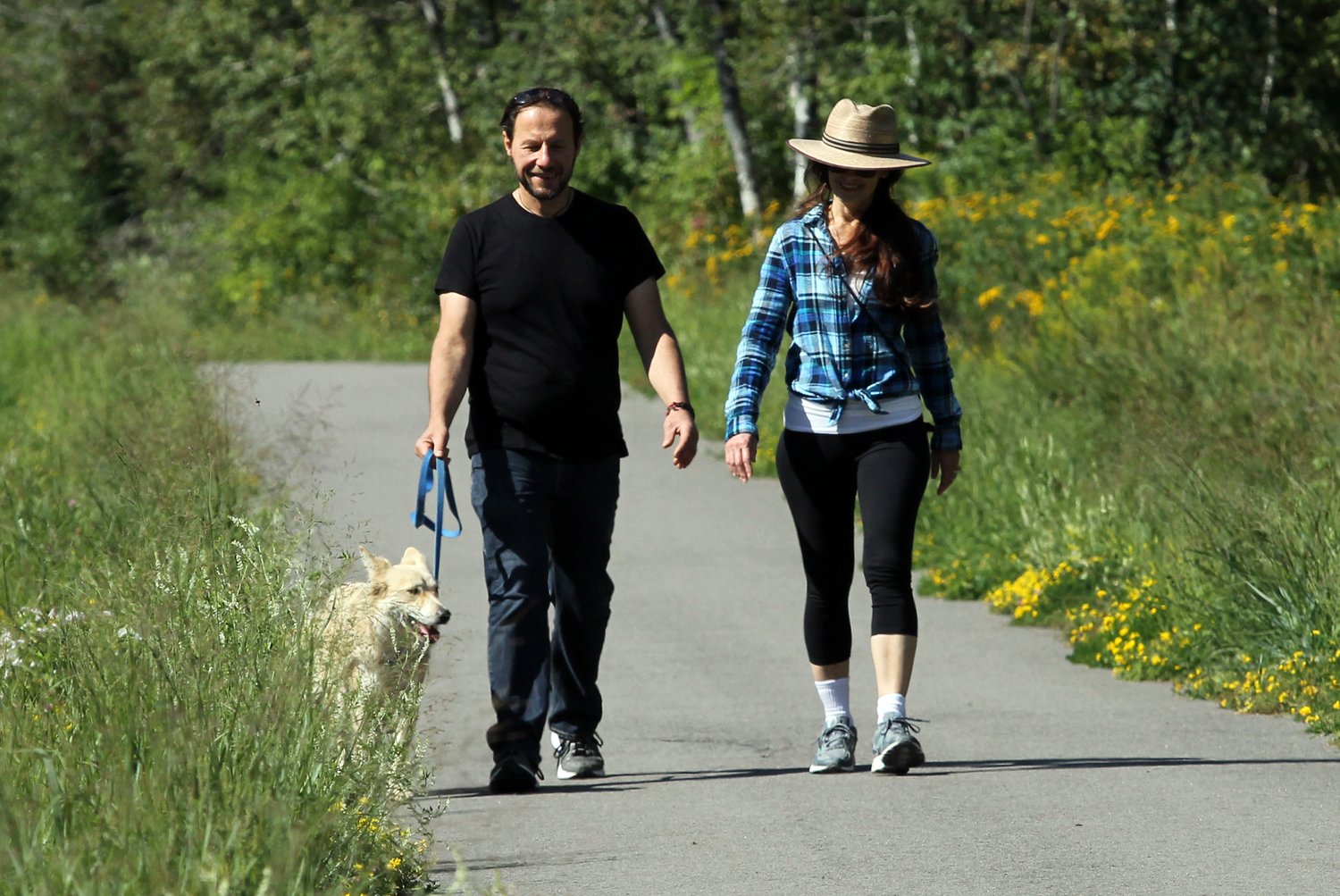Support the Timberjay by making a donation.
Brazen wolf attack prompts warning
ELY - Cameras and signs will soon be posted along the Trezona Trail in Ely to warn users of the trail about recent wolf encounters in the area.
According to International Wolf Center …
This item is available in full to subscribers.
Attention subscribers
To continue reading, you will need to either log in to your subscriber account, or purchase a new subscription.
If you are a current print subscriber, you can set up a free website account and connect your subscription to it by clicking here.
If you are a digital subscriber with an active, online-only subscription then you already have an account here. Just reset your password if you've not yet logged in to your account on this new site.
Otherwise, click here to view your options for subscribing.
Please log in to continue |
Brazen wolf attack prompts warning
ELY - Cameras and signs will soon be posted along the Trezona Trail in Ely to warn users of the trail about recent wolf encounters in the area.
According to International Wolf Center Communications Director Chad Richardson, a dog out for a run with its owner was attacked by a wolf at about 8:30 p.m. on Aug. 15. The dog’s owner, Ted Schlosser, of Ely, reported the attack, which occurred near the boat landing on Shagawa Lake, to the Department of Natural Resources. “As I was running, I heard a yelp from my dog behind me,” Schlosser said. “I turned around and saw that a wolf had him down on the ground. I screamed extremely loudly at it and it took off running with my dog into the woods. I immediately started chasing after him and screaming as loudly as I could. I had gotten into the woods about a hundred feet and my dog was free. The wolf was still standing there about twenty feet away.”
Schlosser grabbed his dog and started walking the roughly three-quarters of a mile back to his pickup. “I had my other three dogs with me as well,” said Schlosser, noting that all his dogs are small. “After walking a few hundred yards, the wolf ran up to us again. He came close to the edge of the trail (about 50 feet away from us). I screamed at him again. We continued walking. A few hundred more feet, and he ran up to the edge of the trail again. I grabbed a large stick to carry and I yelled at him again. He started barking at me. He continued barking for quite a while and had a high tail posture.”
Lori Schmidt, Wolf Center wolf curator, described the aggressive behavior of the wolf. “With over 33 years of wolf behavioral experience, I know that barks are a threat display, and a high tail means the animal is confident, and it may indicate aggressive arousal,” Schmidt said. “Wolves with low, tucked tails are more fearful and may be easier to deter. This animal may be food-conditioned toward people.“
Schmidt manages the wolf helpline, a resource for local residents to report wolf issues and receive advice from local wildlife management agencies such as the DNR and the United States Department of Agriculture Wildlife Services office located in Grand Rapids.
If anyone has issues with wolves on the Trezona Trail or anywhere in the Ely area, contact the Wolf Helpline at 218-365-4695 ext. 134. If you believe you face an imminent threat, call 911 for a local conservation officer.
Schlosser and his dogs did make it safely back to his truck and the dog that suffered the attack was treated at the Ely Veterinary Clinic with a single wound on his right shoulder.
Schmidt is coordinating with Vermilion Community College’s Wildlife Society Chapter to deploy wildlife cameras and signs, identify the patterns of wolf presence, and will attempt to deploy negative conditioning techniques to deter the wolf from the area.
“The fall season can be particularly problematic for wolf issues as the presence of pups in a pack can create a lot of food pressure,” Schmidt said. “This may leave some younger animals to go hungry, scavenge, or disperse and become loners in search of another wolf and a new territory. Wolf pups are very mobile this time of the year, so if this wolf is associated with a pack and pups, the chances are they will move on relatively quickly.”
Schmidt said it is important that human-related food supplies such as garbage, dog food, even remnants of bird or deer feeders are removed, as they can serve as an attractant for wolves.
Since 2014, Minnesotans can not legally kill a wolf except in the defense of human life, and wolves are a federally-protected species managed by the U.S. Fish and Wildlife Service.
“In the case of the Trezona Trail, the area has a high concentration of human use and would not be conducive to trapping wolves, and the USDA abides by depredation management zones, with the Trezona Trail area being north of the line for removal for domestic livestock depredation,” Schmidt said.







